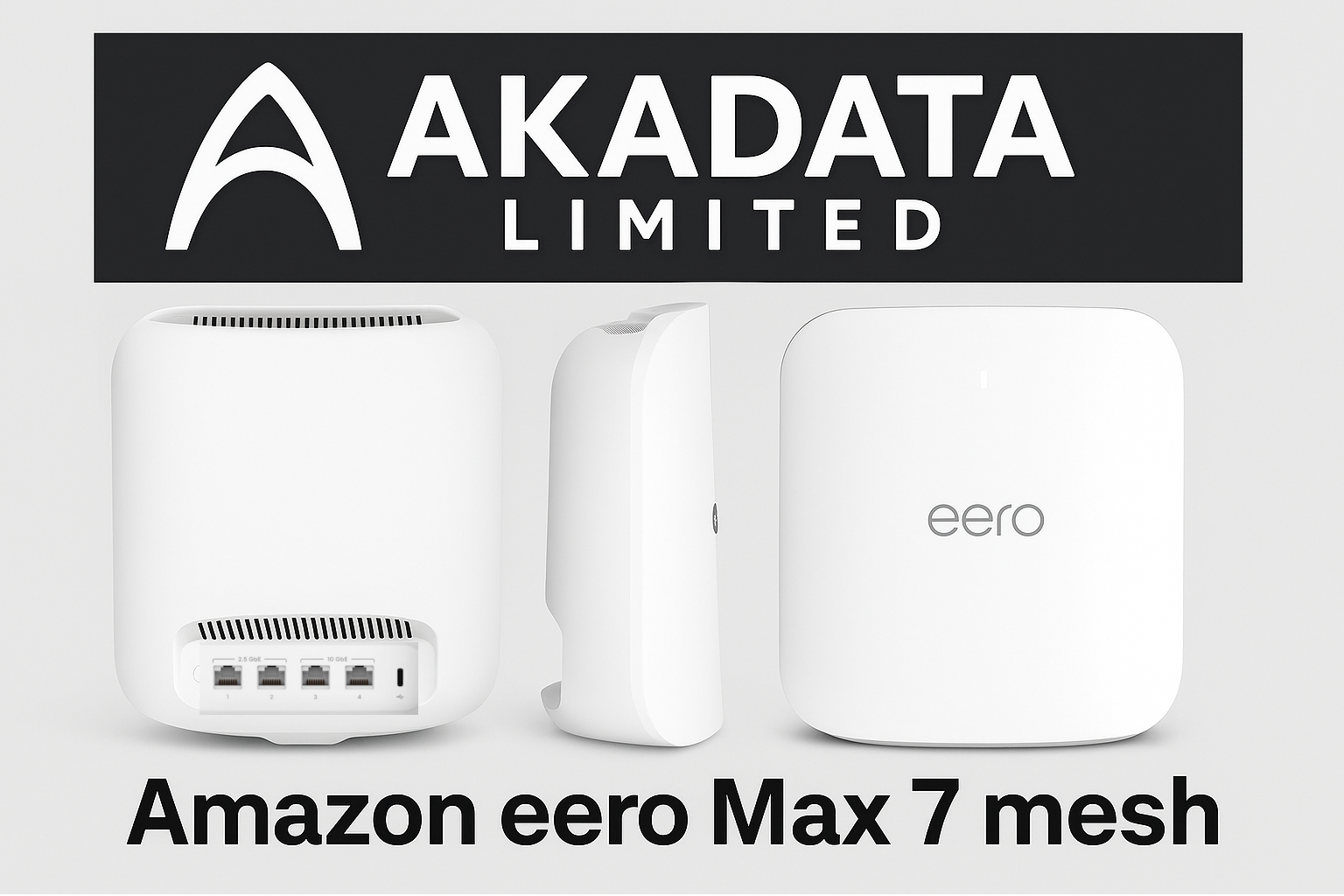Eero Max 7 – The Chicken and Egg of Modern Wi-Fi, and the Call for Openness

Introduction
AKADATA LIMITED recently began transitioning to the Amazon Eero Max 7, a high-speed Wi-Fi 7 mesh device. During this process, an interesting challenge arose: the Eero Max 7 requires a mobile phone or tablet with internet connectivity to complete its setup.
This situation creates a practical dilemma. For users replacing their main router, the internet connection and Wi-Fi are unavailable during part of the transition. However, the Eero setup process relies on an active internet connection through its mobile app, leaving the user temporarily offline.
In AKADATA LIMITED’s case, this scenario led to partial disruption of network services. The Wi-Fi 7 radios of the Eero Max 7 remained inactive until the cloud-based configuration was completed. This experience highlighted that not all users or businesses have ready access to mobile data or a second broadband connection, and such assumptions may introduce operational challenges during network upgrades.
While AKADATA LIMITED does maintain a mobile phone with Wi-Fi 7 support, mobile coverage at the installation site is limited. This contributed to the complexity of the transition, as the Eero’s app-based setup could not proceed without connectivity. The situation was resolved by reconnecting the previous router and using a laptop configured as a Wi-Fi hotspot, allowing setup to be completed.
It’s important to note that the temporary network disruption was not caused by a fault in the Eero Max 7 itself but was a result of changing the network configuration to implement PPPoE directly on the server, avoiding reliance on the Eero as the primary internet router.
Exploring the Eero Max 7 Platform
The Eero platform is understood to run on Linux and likely includes other open-source software subject to licenses such as the GNU General Public License (GPL). As part of AKADATA LIMITED’s commitment to transparency and technical research, a UK GDPR Article 15 Subject Access Request has been submitted to Amazon UK Services Ltd., including a request for the complete GPL source code for the Eero Max 7 firmware.
Obtaining this information has significant benefits:
- Supporting security reviews
- Allowing community contributions and improvements
- Ensuring compliance with open-source licensing obligations
There has been valuable research into previous Eero devices, such as Markuta’s Eero 6 analysis, revealing detailed insights into the hardware and software architecture. However, equivalent technical details for the Eero Max 7 remain less accessible, as public repositories or listings of GPL source code specific to this device are not currently available from Amazon.
Although Amazon’s legal terms for Eero (https://eero.com/legal/tos) reference open-source requirements, a comprehensive list of GPL components or firmware downloads for the Max 7 has not been located on Amazon’s websites. The only official documentation found is a support article introducing the Eero Max 7:
https://support.eero.com/hc/en-us/articles/18940294202779-Introducing-the-eero-Max-7
Why Transparency Matters
The Eero Max 7 is an advanced device capable of significantly improving network performance. Yet modern networking equipment depends heavily on software. Where GPL-licensed code is part of this software, users and the wider community are entitled to review and access the corresponding source code.
AKADATA LIMITED believes that transparency and user empowerment are essential principles in developing secure, trustworthy technology. While awaiting Amazon’s response to the GDPR and GPL inquiries, we encourage other users and organizations to consider how reliance on proprietary systems and cloud-based services can affect operational resilience and flexibility.
We look forward to learning more about the internal workings of the Eero Max 7 and sharing any insights that might benefit the security, privacy, and technological freedom of users.
